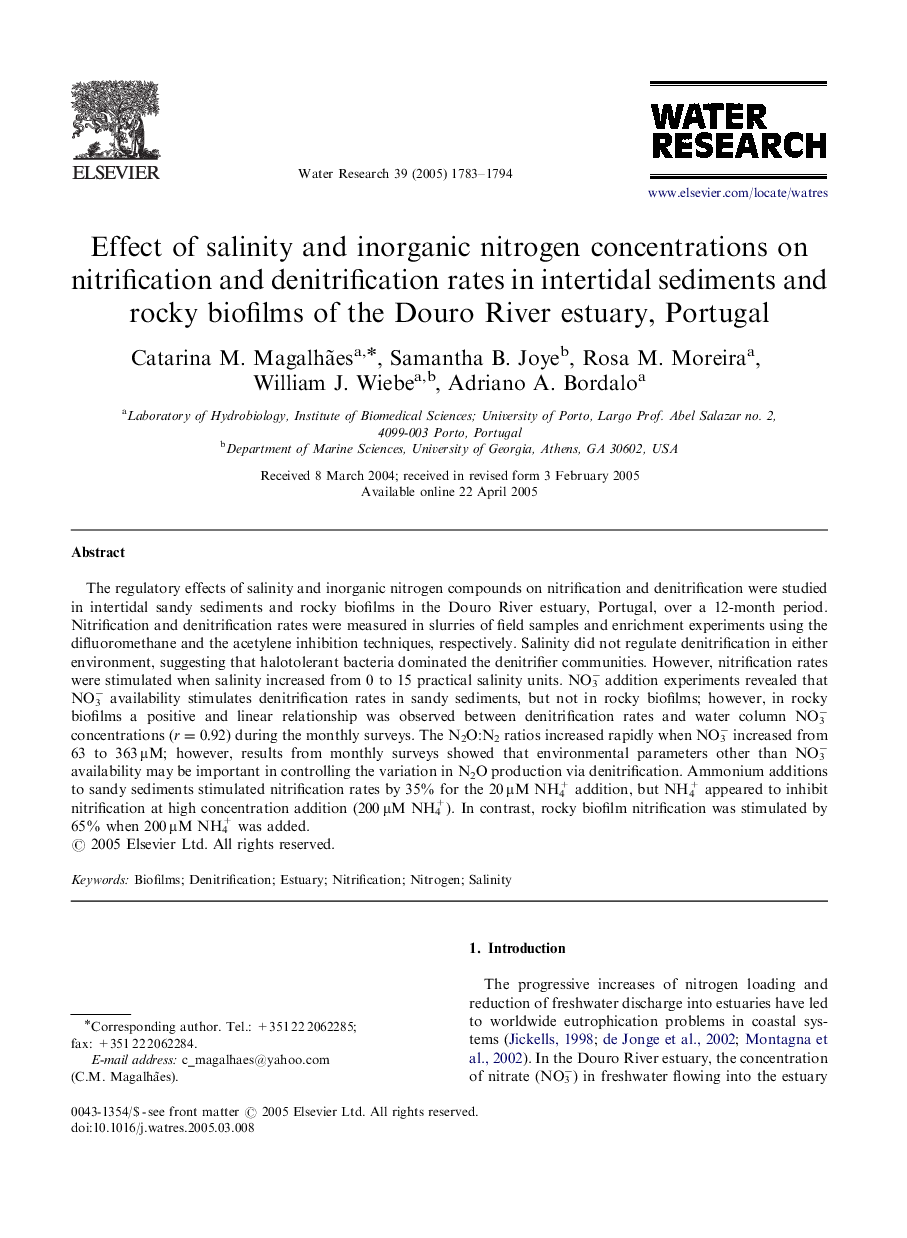| Article ID | Journal | Published Year | Pages | File Type |
|---|---|---|---|---|
| 9468065 | Water Research | 2005 | 12 Pages |
Abstract
The regulatory effects of salinity and inorganic nitrogen compounds on nitrification and denitrification were studied in intertidal sandy sediments and rocky biofilms in the Douro River estuary, Portugal, over a 12-month period. Nitrification and denitrification rates were measured in slurries of field samples and enrichment experiments using the difluoromethane and the acetylene inhibition techniques, respectively. Salinity did not regulate denitrification in either environment, suggesting that halotolerant bacteria dominated the denitrifier communities. However, nitrification rates were stimulated when salinity increased from 0 to 15 practical salinity units. NO3â addition experiments revealed that NO3â availability stimulates denitrification rates in sandy sediments, but not in rocky biofilms; however, in rocky biofilms a positive and linear relationship was observed between denitrification rates and water column NO3â concentrations (r=0.92) during the monthly surveys. The N2O:N2 ratios increased rapidly when NO3â increased from 63 to 363 μM; however, results from monthly surveys showed that environmental parameters other than NO3â availability may be important in controlling the variation in N2O production via denitrification. Ammonium additions to sandy sediments stimulated nitrification rates by 35% for the 20 μM NH4+ addition, but NH4+ appeared to inhibit nitrification at high concentration addition (200 μM NH4+). In contrast, rocky biofilm nitrification was stimulated by 65% when 200 μM NH4+ was added.
Related Topics
Physical Sciences and Engineering
Earth and Planetary Sciences
Earth-Surface Processes
Authors
Catarina M. Magalhães, Samantha B. Joye, Rosa M. Moreira, William J. Wiebe, Adriano A. Bordalo,
